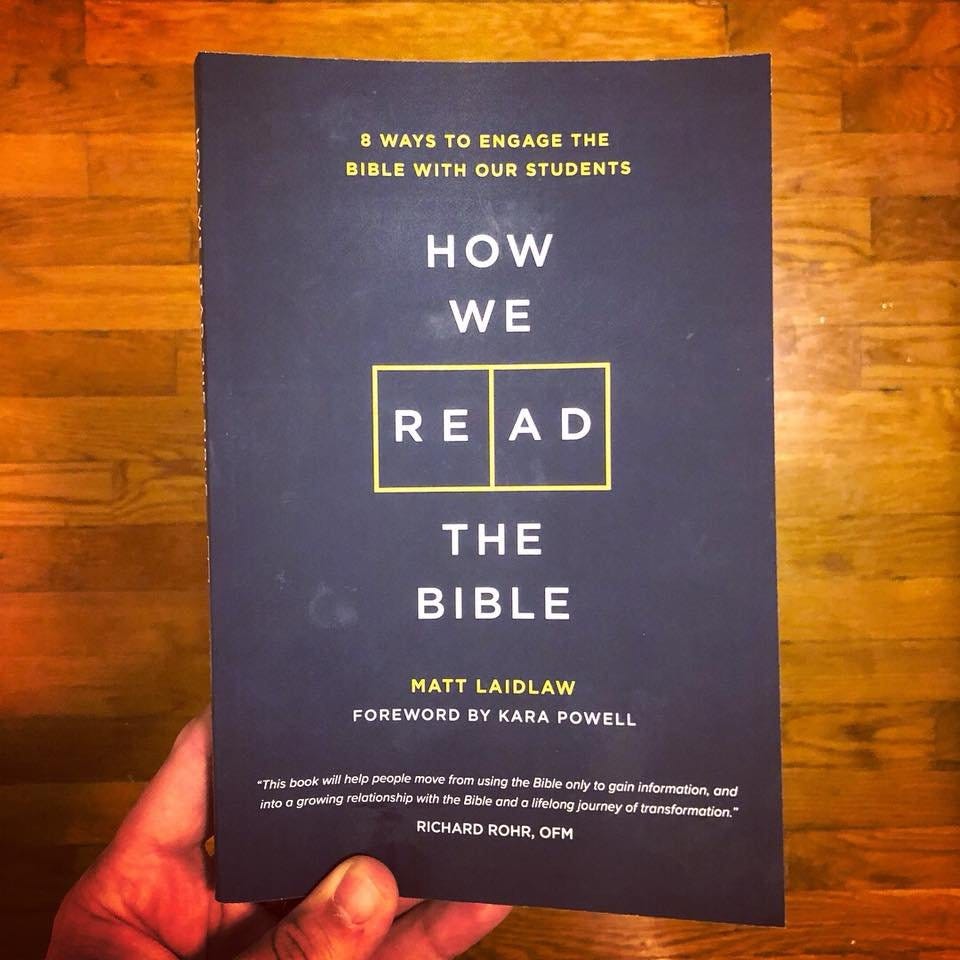Because it really matters - A review of 'How We Read the Bible' by Matt Laidlaw
For the sake of transparency, this is a bias review.The simple reality is that I’m reviewing a book by a close friend of mine. Matt Laidlaw and I have known each other for over 10 years, he has been my boss and mentor, groomsmen and one of my most trusted friends. There are few people who have helped shaped and guide who I am more in my adult years - if I had a Mount Rushmore of influential people, Matt would most certainly be found there.That said, our relationship has been built on the trust of the other to say the hard things – to support, but most importantly challenge when necessary. While I can’t say I am consciously holding back or toning things down in my review, I wanted to name this to help lend insight as you dive into my review of his first book from Fuller Youth Institute, “How We Read the Bible: 8 Ways to Engage the Bible with Our Students”.[For a visual recap of the book, check out my notes over at Illustrated Book Notes]The Writing:Though Matt no longer works at a church, as the book unfolds, it displays one thing for certain – a pastor pastors regardless of their context. His writing style, tone, and invitation speaks in a manner of an individual who not only deeply loves the Bible but from an individual who both personally and from within a ministry context has wrestled through the implications of how we read the Bible and deeply cares for how that affects us personally and those we interact with. It is narrative driven, showing readers a way not simply telling them of the Bible’s importance in their walk of faith.The Content:Though the subtitle might keep those who aren’t youth workers away from picking up, I would argue this is a resource for all Christians – especially those who are leading and pastoring individuals of all ages. It’s themes and overall arc display how it is a needed resource to the Church whole and also a reminder for those who might feel or find themselves homeless in their faith that they are not alone in the journey they find themselves on. Though you might be able to read between the lines on where Matt might land theologically, he mirrors Fuller Youth Institutes approach in not prescribing his theological leanings and experience as the best way forward. Instead Matt masterfully and graciously displays an ‘include and transcend’ posture to how he has personally grown in how he approaches the Bible. He is quick to avoid any type of arrival language, which echoes throughout the book as you can see him pulling from each ‘way’ he has engaged the Bible throughout his life to show how each is necessary and beautiful (along with their potential shortcomings) as we grow in life and faith.I appreciated that from the get go, Matt quickly addressed differences and implications of focusing solely answering the question ‘What is the Bible?’ towards moving to addressing the importance of how we read the Bible. Or to put it another way, that how we engage and answer the question of ‘What is the Bible?’ is a very important one. It is a big tree in the forest that must be addressed, but often we can get caught up in that question and stuck there; instead of recognizing that the Bible should launch us into the full forest of life – helping us to move along and how we are reading the Bible helps energize that journey.Matt also concludes each chapter concludes with questions and next steps for individuals to do on their own but also a section for those in ministry or leading a ministry to consider – a helpful reminder that transformation and growth must start first with the individual and then flow to a community.My Takeaway:I’m so grateful for this book.Through Matt’s pastoral writing style, I was able to connect his story to my own and remember the love for the Bible that was once so prominent in my life. It got me excited to revisit the Bible again, which is a difficult confession since I hold an MDiv, and not as some checklist in hopes of connecting with God but rather another connecting point with a God I believe cares deeply about today and the moment we find ourselves in. This book reminded me how much I am naturally drawn towards conversations with people around what the Bible is and that I have rarely invited people into actually reading it and experiencing. Matt challenged myself and readers to not avoid the former but rather to make sure we are constantly striving towards the latter – to dive into the mess and mystery of life and faith and the Bible.Though I understand why the publisher positioned to book as it did to focus on young people/students, this book is, again, a needed resource for the Church. I would recommend this for anyone in ministry, for parents, and for those looking for a way to reconnect with the Bible.Because how we read the Bible is really matters.Note: I received a free copy of the book from the publisher in exchange for my honest thoughts and review._My GoodReads rating: 4/5To understand how I rate books, please check out the following post.


